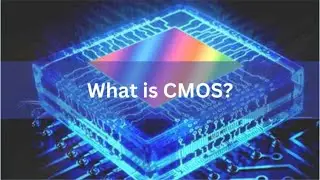What's NEXT in Evolution of Object Oriented Programming? procedural structure & organization of code
Are you curious about the future of object-oriented programming? In this video, we'll explore the latest trends and advancements in OOP and what's next for this fundamental programming concept. From new languages and frameworks to emerging paradigms and best practices, we'll dive into the exciting developments that are shaping the future of software development. Whether you're a seasoned developer or just starting out, this video will give you a comprehensive overview of what's on the horizon for object-oriented programming. So, let's dive in and see what's next!
Join me as I dive into the future of Object Oriented Programming and challenge myself to predict what's next in this ever-evolving field!
Hook - 15s
Start with an intriguing question about the future of programming, such as 'What if your code could think for itself?'
Introduction - 15s
Introduce Object Oriented Programming (OOP) and its foundational role in software development, highlighting its importance in modern programming.
Presentation of Problem/Challenge - 1m
Discuss the common challenges developers face with traditional OOP concepts, such as complexity and scalability.
Object-Oriented Programming (OOP) has evolved over several decades, with various programming languages contributing to its development and refinement. Here is a brief overview of the evolution of Object-Oriented Programming:
1950s-1960s - Early Concepts:
The earliest concepts related to OOP emerged in the 1950s and 1960s, with early programming languages incorporating elements of procedural abstraction. Languages like Fortran and Lisp included procedures and functions, laying the groundwork for higher-level abstractions.
1967 - Simula:
Simula, developed by Ole-Johan Dahl and Kristen Nygaard in Norway, is often credited as the first programming language designed explicitly for object-oriented programming. It introduced the concept of classes, objects, inheritance, and dynamic memory allocation.
1970s - Smalltalk:
In the 1970s, Smalltalk, created at Xerox PARC by Alan Kay, Dan Ingalls, and others, played a crucial role in the evolution of OOP. Smalltalk introduced a pure object-oriented language with a dynamic environment, and it heavily influenced subsequent languages.
1980s - C++ and Objective-C:
In the 1980s, C++ and Objective-C were developed. C++ (created by Bjarne Stroustrup) added object-oriented features to the C language, including classes, inheritance, and polymorphism. Objective-C, developed by Brad Cox and Tom Love, added Smalltalk-style object-oriented programming to C.
1989 - Object-Oriented Analysis and Design (OOAD):
Grady Booch published the book "Object-Oriented Design with Applications," introducing Object-Oriented Analysis and Design (OOAD) methodologies. This marked a shift towards a systematic approach to designing software systems using OOP principles.
1990s - Java and Python:
Java, developed by James Gosling and others at Sun Microsystems, was released in the mid-1990s. It became popular for its "Write Once, Run Anywhere" philosophy, and it further popularized OOP concepts. Python, created by Guido van Rossum, also gained attention for its readability and support for OOP.
Mid-1990s - Unified Modeling Language (UML):
The Unified Modeling Language (UML) was developed by Grady Booch, Ivar Jacobson, and James Rumbaugh, bringing together the notations and methodologies from their respective OOAD approaches. UML became a standard for visualizing, specifying, constructing, and documenting the artifacts of a software system.
2000s - .NET Framework and C#; Ruby on Rails:
Microsoft's .NET Framework and C# introduced modern OOP features in the early 2000s. Ruby on Rails, a web development framework using the Ruby programming language, embraced OOP principles and gained popularity for its developer-friendly approach.
2010s - Swift and Kotlin:
Apple introduced Swift in 2014 as a successor to Objective-C for iOS and macOS development. Swift incorporates modern OOP concepts and emphasizes safety and performance. Kotlin, introduced by JetBrains, gained official support for Android development, providing a more concise and expressive alternative to Java.
Modern Trends - JavaScript (ES6+), TypeScript, and OOP in Functional Languages:
In the realm of web development, JavaScript has evolved to support OOP features with the introduction of ECMAScript 6 (ES6) and later versions. TypeScript, a superset of JavaScript, adds static typing and additional OOP features. Functional programming languages like Scala, F#, and Kotlin also integrate OOP principles.
The evolution of OOP continues, with ongoing efforts to improve languages, frameworks, and methodologies to meet the changing needs of software development. OOP remains a fundamental paradigm, and its principles are widely used in designing complex, scalable, and maintainable software systems.



















